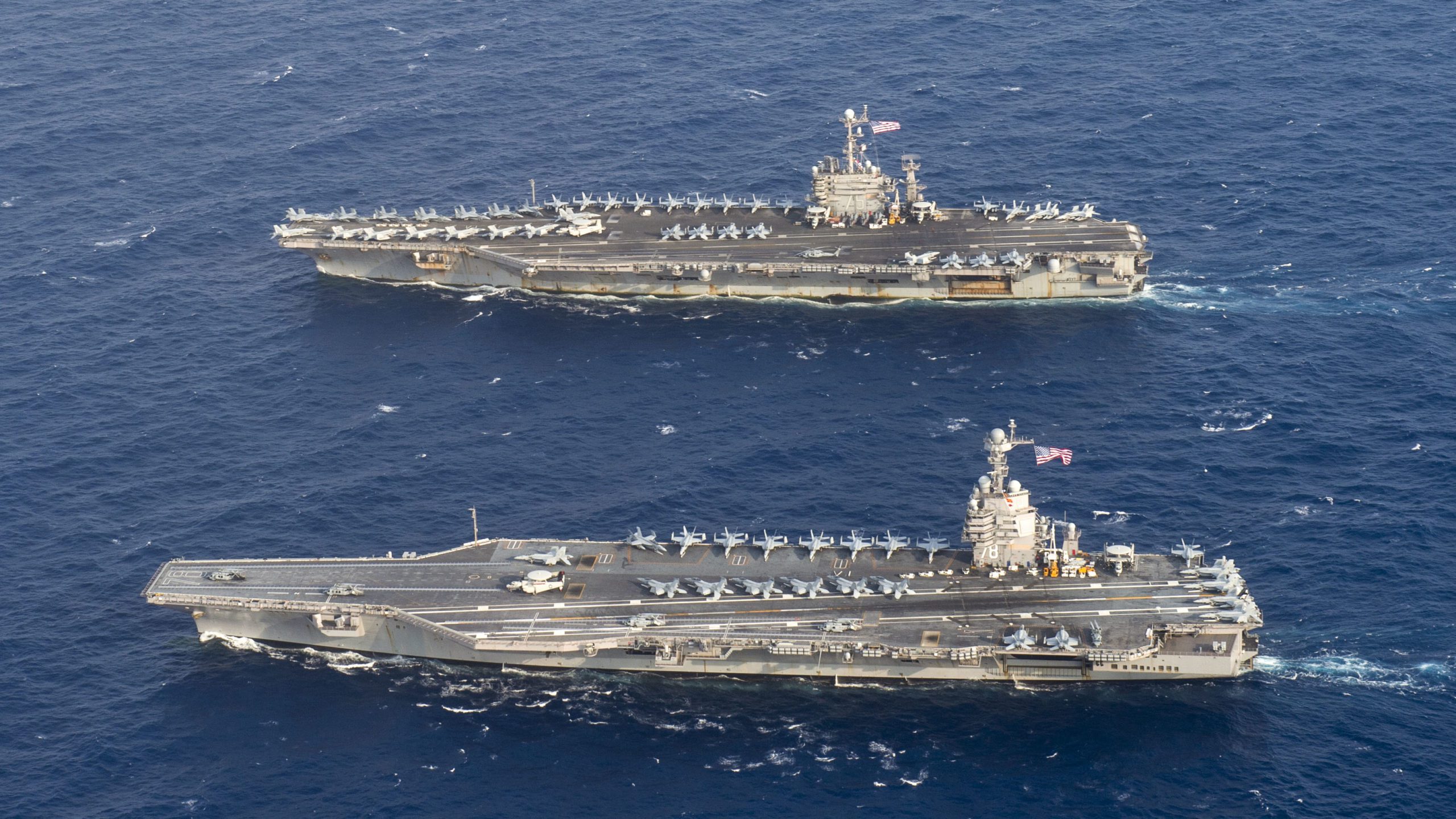
ATLANTIC OCEAN (June 4, 2020) The Ford-class aircraft carrier USS Gerald R. Ford (CVN 78), front, and the Nimitz-class aircraft carrier USS Harry S. Truman (CVN 75) transit the Atlantic Ocean. (U.S. Navy photo by Isaac Esposito/Released)
By Tony Capaccio (Bloomberg) Five years after the US Navy’s costliest warship was crippled by flawed engine gears, prime contractor HII says it may be close to resolving a claim against subcontractor General Electric over who will pay for fixing the defect.
The propulsion problem that forced the USS Gerald R. Ford to return to port in 2018 was one of many issues of varying severity that the $13 billion aircraft carrier has faced since its May 2017 delivery. The Navy declared the gears fixed in May 2019, and the service advanced funds to HII to fix the issue.
“At some point you’ve got to pay them to get the work done,” Vice Admiral Thomas Moore, head of the Naval Sea Systems Command at the time, said in 2019. But who will ultimately foot the bill remains unresolved. While no current estimates of the cost were available, in 2018 the Navy asked Congress to shift $30 million from other accounts to start repairing the damage.
The Ford is currently on a multiweek exercise of its air wing, a final step to deploying on its first maritime mission, as negotiations on the gear incident continue.
Danny Hernandez, a spokesman for HII, said in a statement that the shipbuilder, formally known as Huntington Ingalls Industries Inc., continues “to actively work on a final agreement with GE to resolve this claim.”
He said “we are hopeful that between our two companies and the Navy that a final agreement can be reached without involving a court process.”
GE struck a similar note, saying in a statement that it continues to work closely with HII’s Newport News shipyard and the Navy “to resolve the issue.” The Navy had no comment.
The Navy’s carrier program office said in a 2018 assessment to Congress that an inspection of the carrier’s four main thrust bearings after the failure revealed “machining errors” by GE workers at a Lynn, Massachusetts, facility as “the actual root cause.”
The bearing overheated and “after securing the equipment to prevent damage, the ship safely returned to port.” The bearing is one of four that transfers thrust from the ship’s four propeller shafts.
By Tony Capaccio © 2023 Bloomberg L.P.










No comments:
Post a Comment
How did you like the post, leave a comment. I would appreciate hearing from you all. Best wishes from JC's Naval, Maritime and Military News